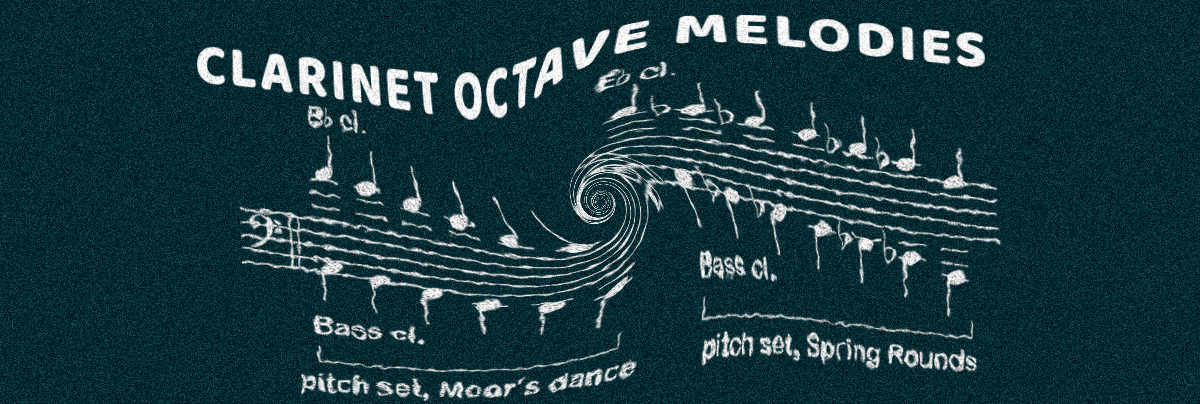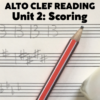Use extreme caution when scoring octave melodies for clarinets, and be aware that the overtones reinforce each other with great potency.
(Tip no. 17 from 100 Orchestration Tips)
Octave melodies for wind instruments of the same model are generally problematic. Rimsky-Korsakov gently advises against their use, though he opens the door for doubling by auxiliaries at the octave, like contrabassoon below bassoon, or piccolo above flute. Of course, this advice doesn’t necessarily apply in other functional applications, like harmonies (especially in combinations with other winds), doubling with strings, bass lines, and so on. But in an exposed melody, a number of problems may occur.
When two of the same wind instrument play melodically an octave apart, whichever is in the most resonant register will tend to dominate. For double-reeds, this will generally be the lower player, which on certain octave notes may go so far as to swallow most of the high player’s resonance. For flutes, this is reversed. The upper player will drown out the lower player unless the dynamics are carefully controlled, and even then there will be difficulties balancing the quality of tone between the two players. Of course, all these problems go away when it’s an auxiliary doubling at the octave, because both instruments are at exactly the same respective register and level of projection.
Underlying this phenomenon is the reinforcement of partials. Auxiliaries tracking below standard instruments will add a spectrum of timbre, the dominant partial of which will actually reinforce the root tone of player above. This is also why the lower oboe may swallow the upper oboe in an octave if the lower tone’s second partial is too dominant.
But clarinets are a special case, in that they don’t reinforce the second partial at all. They’re rich in odd-numbered partials, which result in overtones that spell out a complete dominant ninth chord. Instead of the tones stacking nicely, they tend to have certain edgy timbre, not always pleasant in quality. The imperfection of some of those overtones seem to be emphasised to an acutely sensitive ear by octave clarinets, where otherwise they might not cause the slightest twinge.
Mahler takes advantage of this phenomenon in the first movement of his Fourth Symphony, by adding a melody by exposed octave clarinets near the start. Mahler piles on the ear-twisting pungency by doubling clarinets 1 and 2 on the top line, with clarinet 3 tracking from the octave below. The resultant sound resembles a sailor’s hornpipe, with a lusty, rugged character despite the smoothness of the clarinet sound.
This acoustical weirdness is also somewhat present when bass clarinets play octaves with B-flat clarinets, but it’s ameliorated by the similarity of register. If both instruments are playing chalumeau octaves, their overtones don’t tend to set up such aggressive resonance above. But all bets are off when an E-flat clarinet plays octaves with a B-flat clarinet, both in their clarino registers. A very potent ringing quality is quite likely to result, even at a lower dynamic.

If you need an octave melody in winds but want to avoid such a pungent sound, try them with the clarinet as the top instrument over a bassoon or english horn, or the old Mozart and Haydn trick of flute over bassoon. In The Dance of the Moor from the ballet Petrushka, Stravinsky intentionally wanted an eerie, edgy sound. So he set the clarinet and bass clarinet not one, but two octaves apart. The effect is one of barely suppressed menace, plus a blush of the exotic and a touch of buffoonery. This proved so successful that he repeated the effect in at the start of the Spring Rounds section of the Rite of Spring, but this time with bass clarinet and E-flat clarinet, both in their clarino registers. Exactly what was needed in both spots, as usual with Stravinsky.










